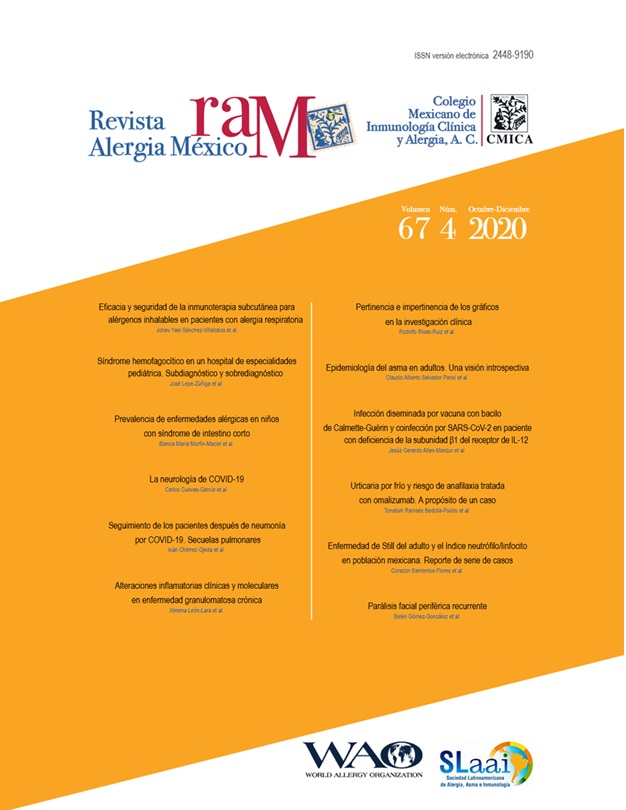Abstract
Charts are a visual aid that is used in articles in order to highlight the results of an investigation. They allow illustrating the results with the purpose of making them clearer. Charts, just like statistical tests, are selected based on the objective of the study, the types of variable, and the statistical analyzes to be illustrated. Some of the most commonly used charts in clinical practice are frequency histograms, which illustrate qualitative variables or frequencies; also error charts, that are used for normally distributed quantitative variables; box plots or violin plots are used for distribution-free quantitative variables, and survival curves are for variables that include the person-time variable. The aforementioned charts can be used to illustrate the comparisons between maneuvers and outcome depending on the type of variable that is being analyzed. When two groups are compared and the dependent variable is dichotomous, forest plots are used; for multivariate models, the chart depends on the type of analysis. As for logistic regression and linear regression, tree diagrams are used; and scatter plots are used for linear regression. Survival plots are used for Cox proportional hazards. Although charts can be very useful, if they are misused, they can show differences where there are none, which leads to a misinterpretation of the studies. In this article, we will use examples to complement the topics that were previously addressed in the articles of this series.
References
Rendón-Macías ME, Valenzuela M, Villasís-Keever MÁ. Sesgos en los estudios de pruebas de diagnóstico: implicación en la estimación de la sensibilidad y especificidad. Rev Alerg Mex. 2020;67(2):165-173. DOI: 10.29262/ram.v67i2.771
Rendón-Macías ME, Villasís-Keever MÁ, Miranda-Novales MG. Estadística descriptiva. Rev Alerg Mex. 2016;63(4):397-407. DOI: 10.29262/ram.v63i4.230
Flores-Ruiz E, Miranda-Novales MG, Villasís-Keever MÁ. El protocolo de investigación VI: cómo elegir la prueba estadística adecuada. Rev Alerg Mex. 2017;64(3):364-370. DOI: 10.29262/ram.v64i3.304
Flores-Ruiz E, Mirando-Novales MG, Villasís-Keever MÁ. El protocolo de investigación VI: cómo elegir la prueba estadística adecuada. Estadística inferencial. Rev Alerg Mex. 2017;64(3):364-370. DOI: 10.29262/ram.v64i3.304
Talavera JO, Rivas-Ruiz R. Investigación clínica IV. Pertinencia de la prueba estadística. Rev Med Inst Mex Seguro Soc. 2011;49(4):401-405.
Peacock JL, Peacock PJ. Oxford Handbook of Medical Statistis. Primera edición. Reino Unido: Oxford University Press; 2011
Rivas-Ruiz R, Pérez-Rodríguez M, Palacios L, Talavera JO. Investigación clínica XXI. Del juicio clínico al análisis de supervivencia. Rev Med Inst Mex Seguro Soc. 2014;52(3):308-315. Disponible en: https://www.medigraphic.com/pdfs/imss/im-2014/im143o.pdf
Talavera JO, Roy-García I, Palacios-Cruz L, Rivas-Ruiz R, Hoyo I, Pérez-Rodríguez M. De vuelta a la clínica. Métodos I. Diseños de investigación. Mayor calidad de información, mayor certeza a la respuesta. Gac Med Mex. 2019;155(4):399-405. Disponible en: https://www.medigraphic.com/pdfs/gaceta/gm-2019/gm194k.pdf
Roy-García I, Rivas-Ruiz R, Pérez-Rodríguez M, Palacios-Cruz L. Correlación: no toda correlación implica causalidad. Rev Alerg Mex. 2019;66(3):354-360. DOI: 10.29262/ram.v66i3.651. PMID: 31606019
González-Díaz SN, Arias-Cruz A, Villarreal-Pérez JZ, Sánchez-Guerra D, Monge-Ortega OP. Evaluation of vitamin D serum levels in asthmatic adults and their relationship with asthma control. Ver Alerg Mex. 2018;65(4):362-371. DOI: 10.29262/ram.v65i4.386
Rivas-Ruiz R, Moreno-Palacios J, Talavera JO. Investigación clínica XVI. Diferencias de medianas con la U de Mann-Whitney. Rev Med Inst Mex Seguro Soc. 2013;51(4):414-419. Disponible en: https://www.redalyc.org/pdf/4577/457745490011.pdf
Villasís-Keever MÁ, Rendón-Macías ME, García H, Miranda-Novales MG, Escamilla-Núñez A. Systematic review and meta-analysis as a support tools for research and clinical practice. Rev Alerg Mex. 2020;67(1):62-72. DOI: 10.29262/ram.v67i1.733. PMID: 32447868
Cox DR. Regression models and life-tables. J R Statist Soc B. 1972;34(2):187-220. Disponible en: https://www.jstor.org/stable/2985181
Monmonier MS. How to lie with maps. EE. UU.: University of Chicago Press; 1991.
Tufte ER. The visual display of quantitative information. EE. UU.: GraphicsPress; 1983.
Pandey AV, Rall K, Satterthwaite ML, Nov O, Bertini E. How deceptive are deceptive visualizations? An empirical analysis of common distortion techniques. En: Proceedings of the 33rd Annual ACM Conference on Human Factors in Computing Systems. EE. UU.: Association for Computing Machinery; 2015.
Ferreira-Hermosillo A, Roy-García I, Rivas-Ruiz R, Palacios-Butchard JJ, Mercado M, Talavera JO. Height and weight progression patterns in Mexican children aged between 6 and 12 years and differences with Ramos-Galván growth charts 40 yearslater. Gac Med Mex. 2020;156(2):117-123. DOI: 10.24875/GMM.M20000349

This work is licensed under a Creative Commons Attribution-NonCommercial 4.0 International License.
Copyright (c) 2021 Revista Alergia México

